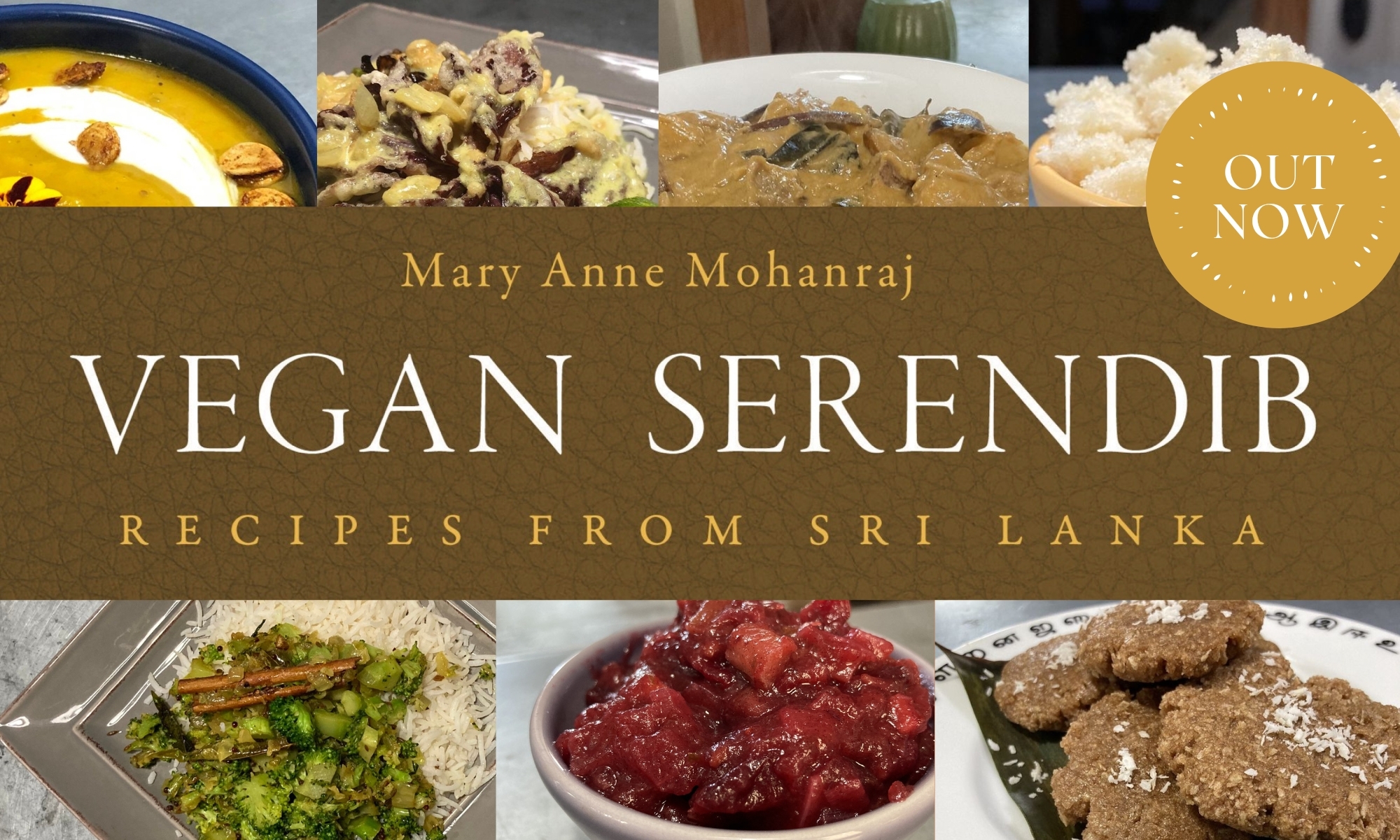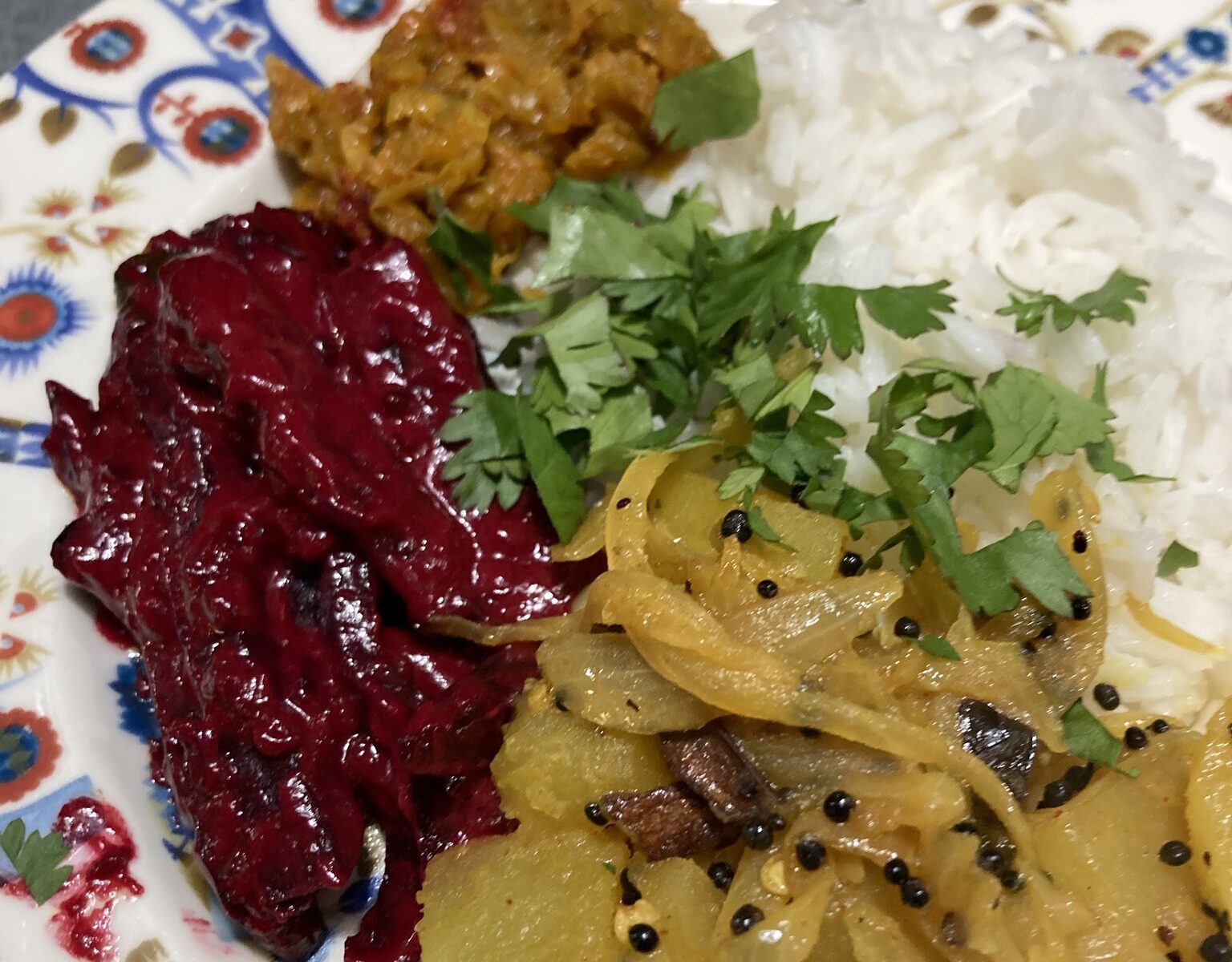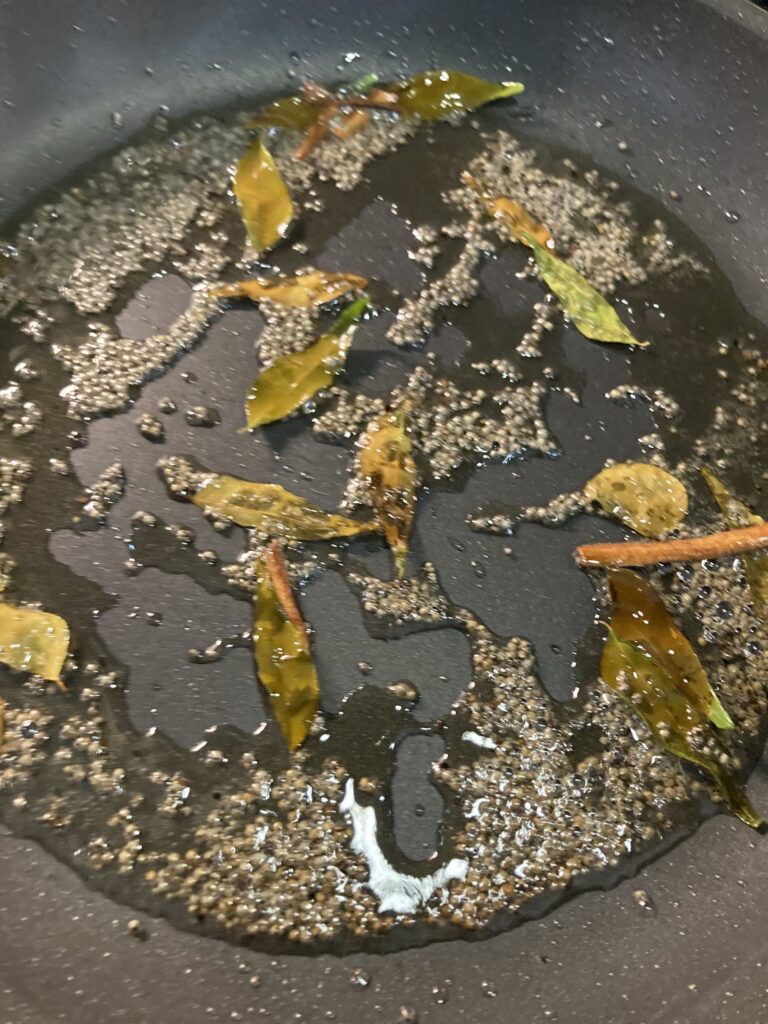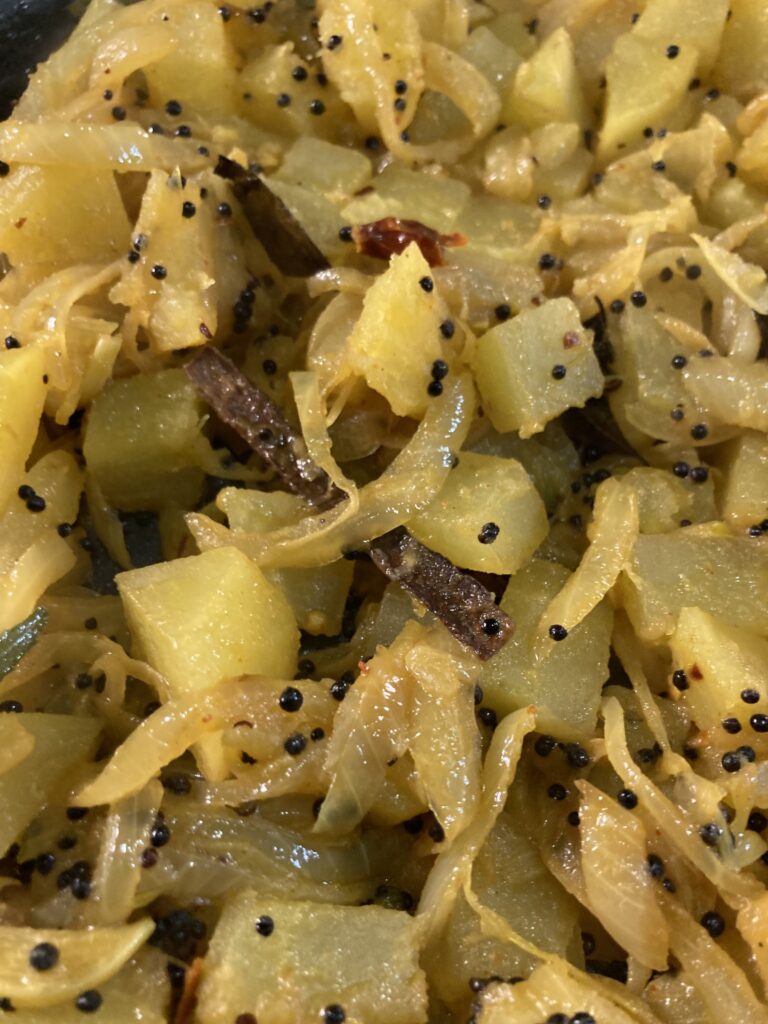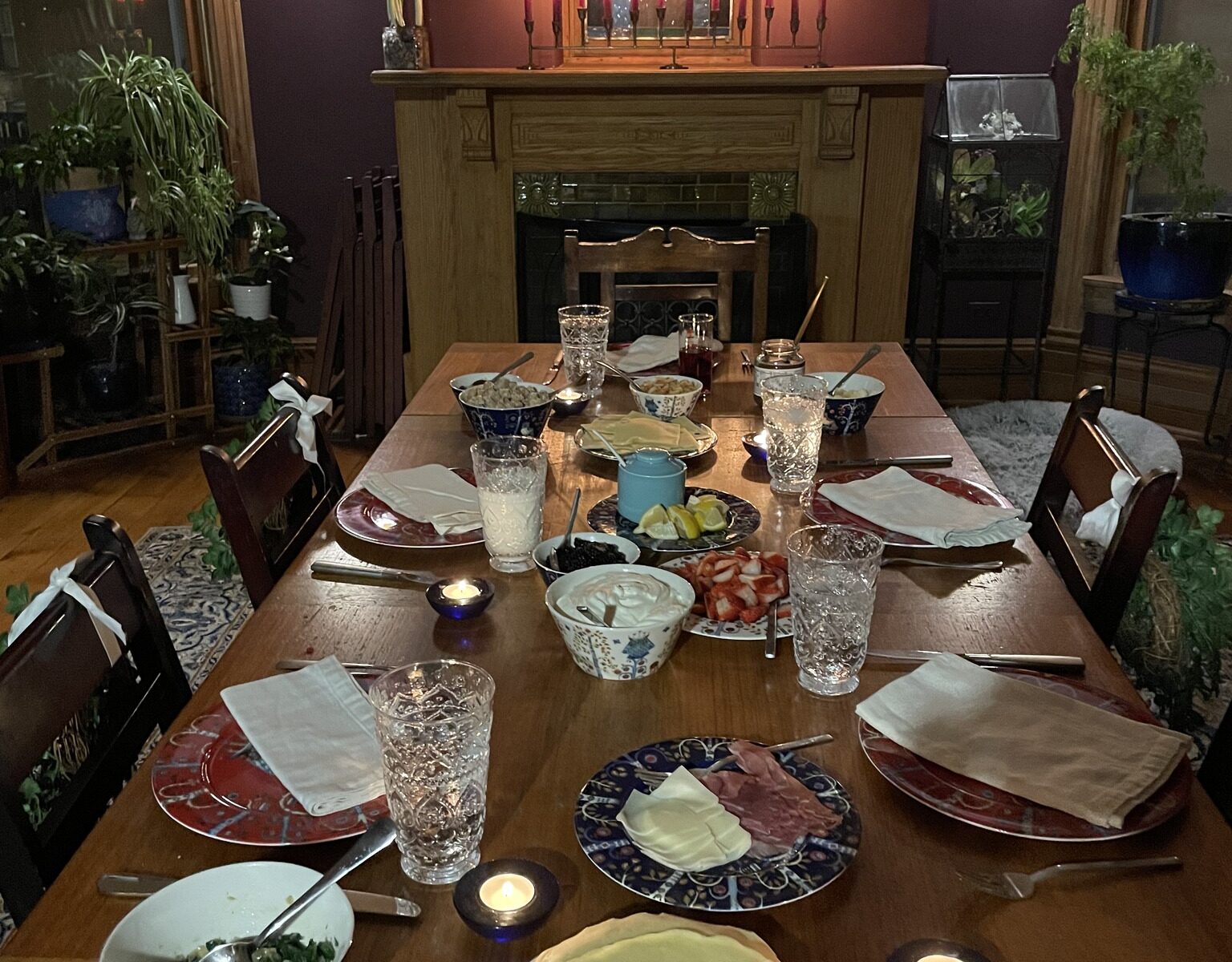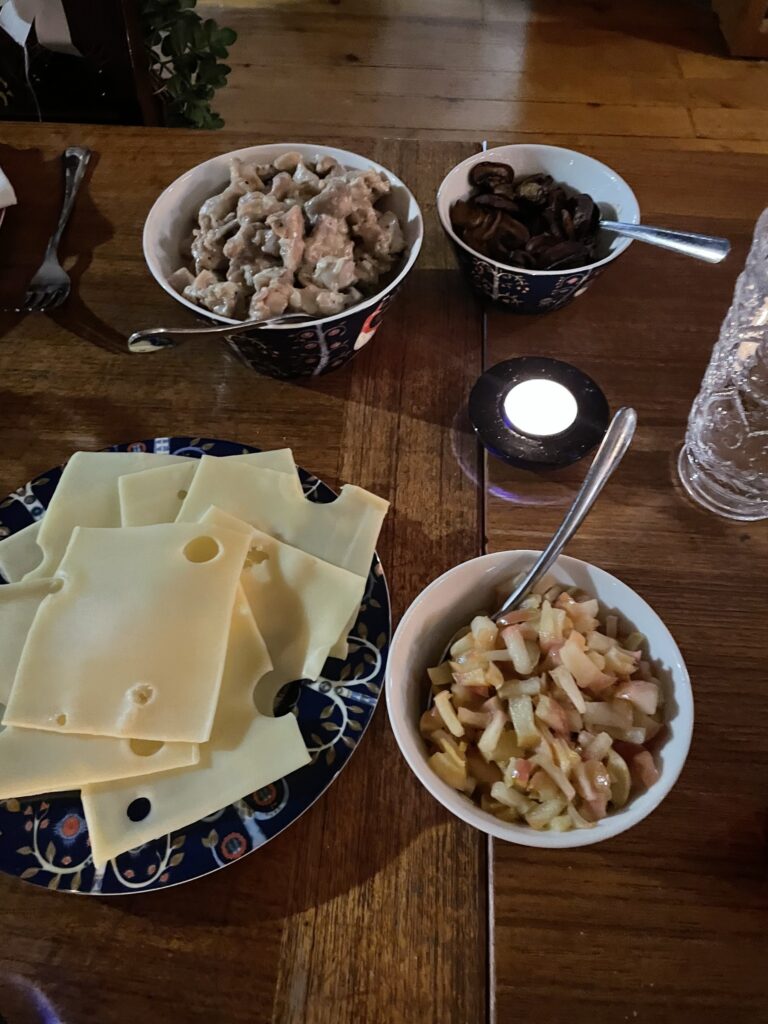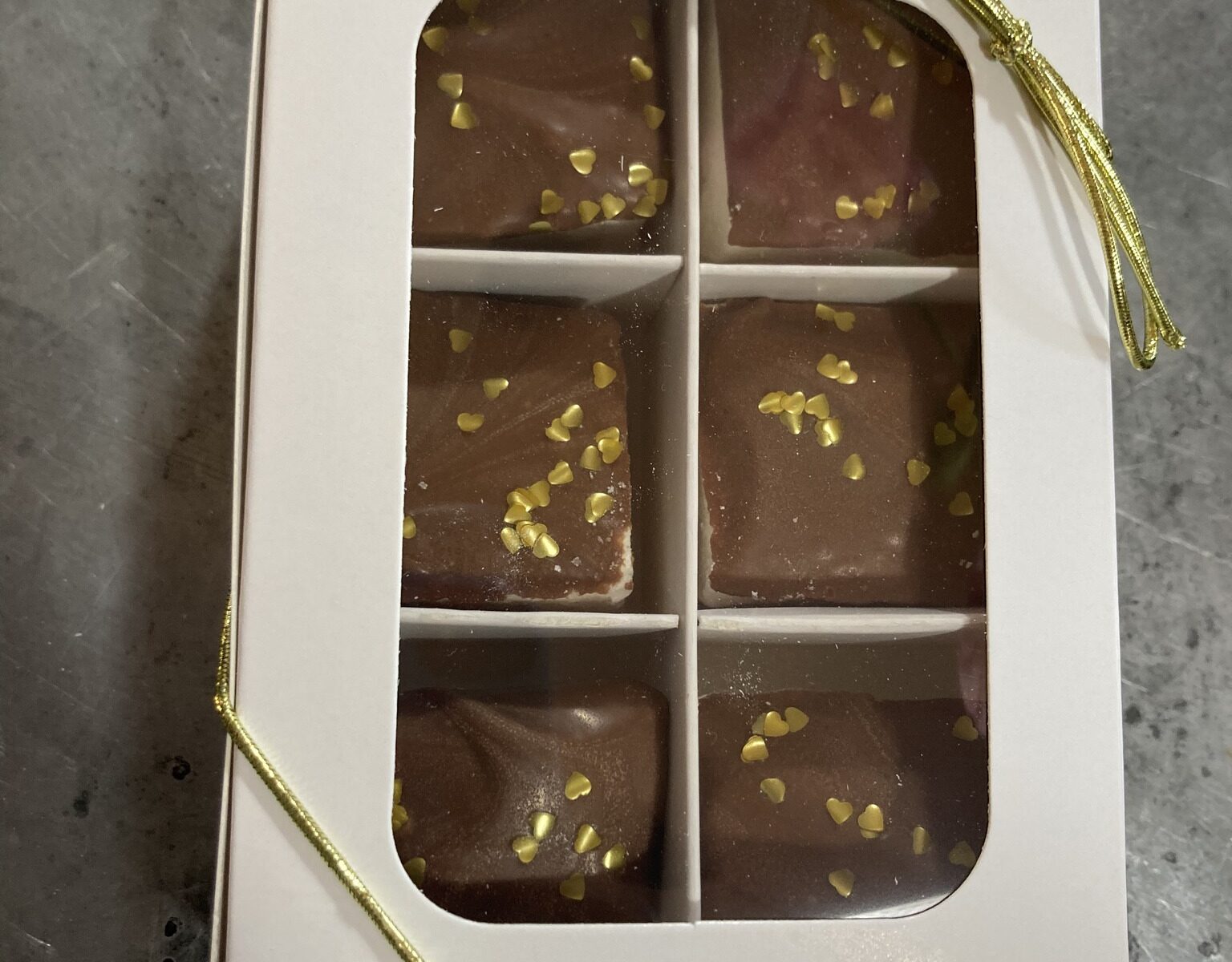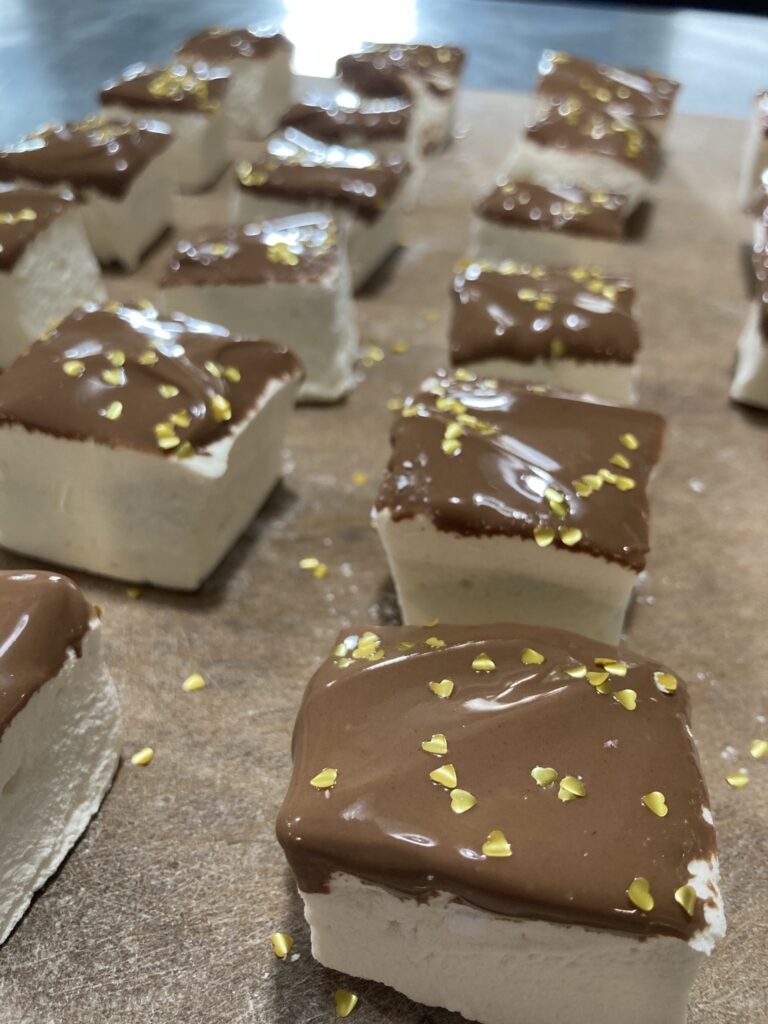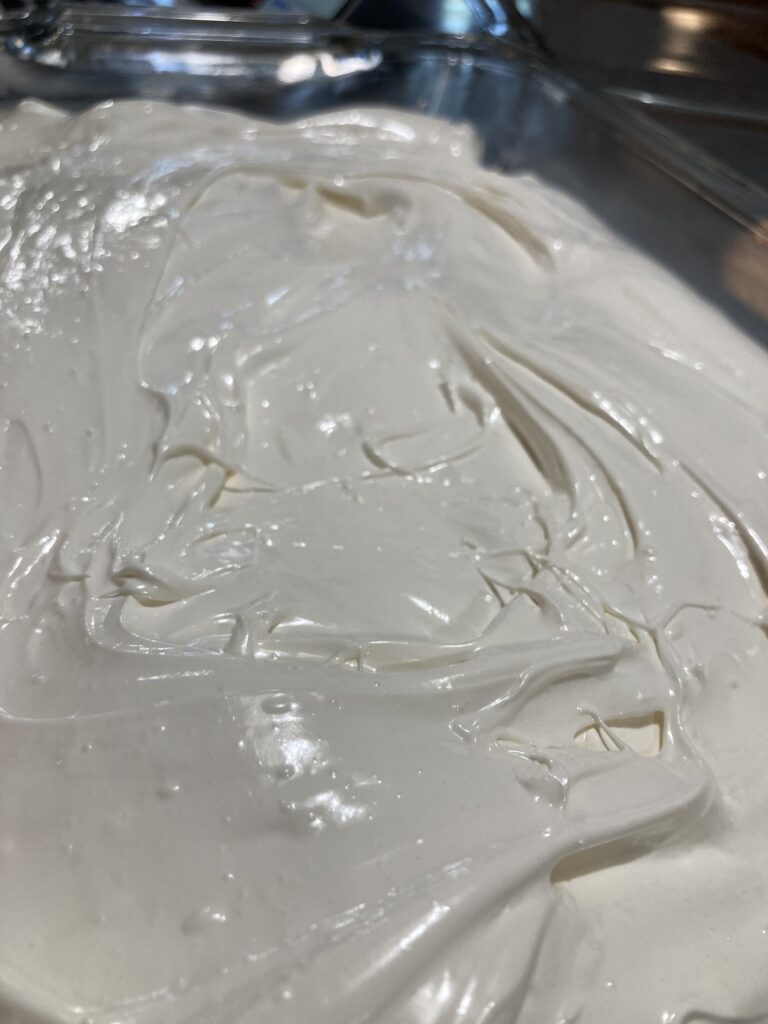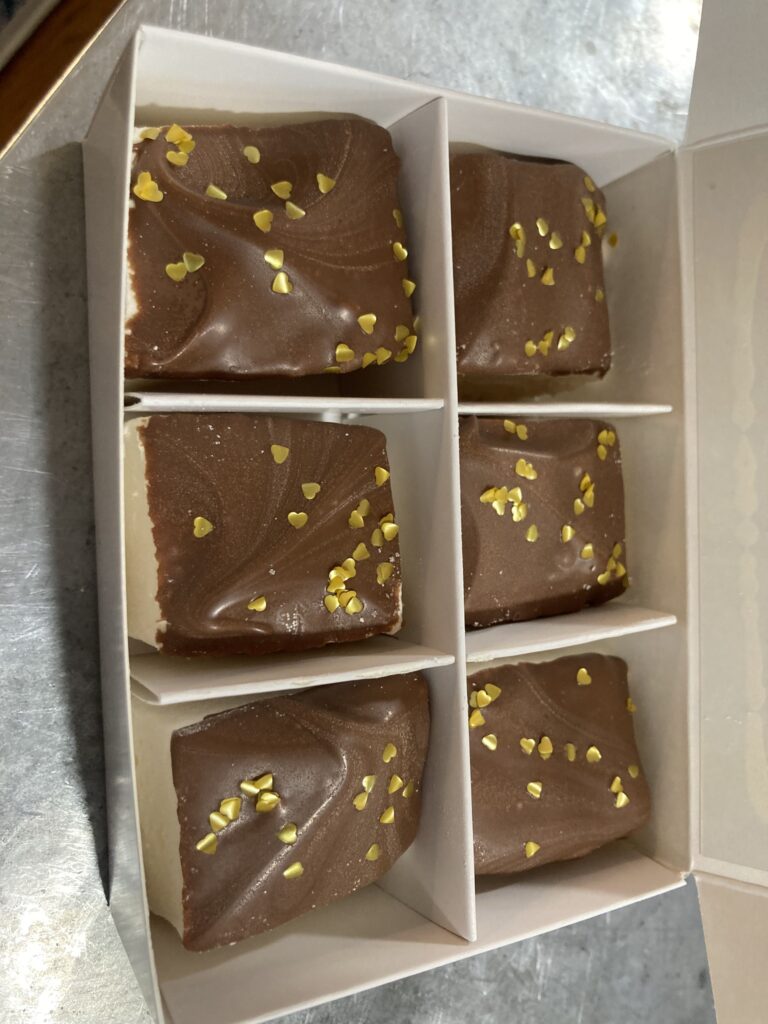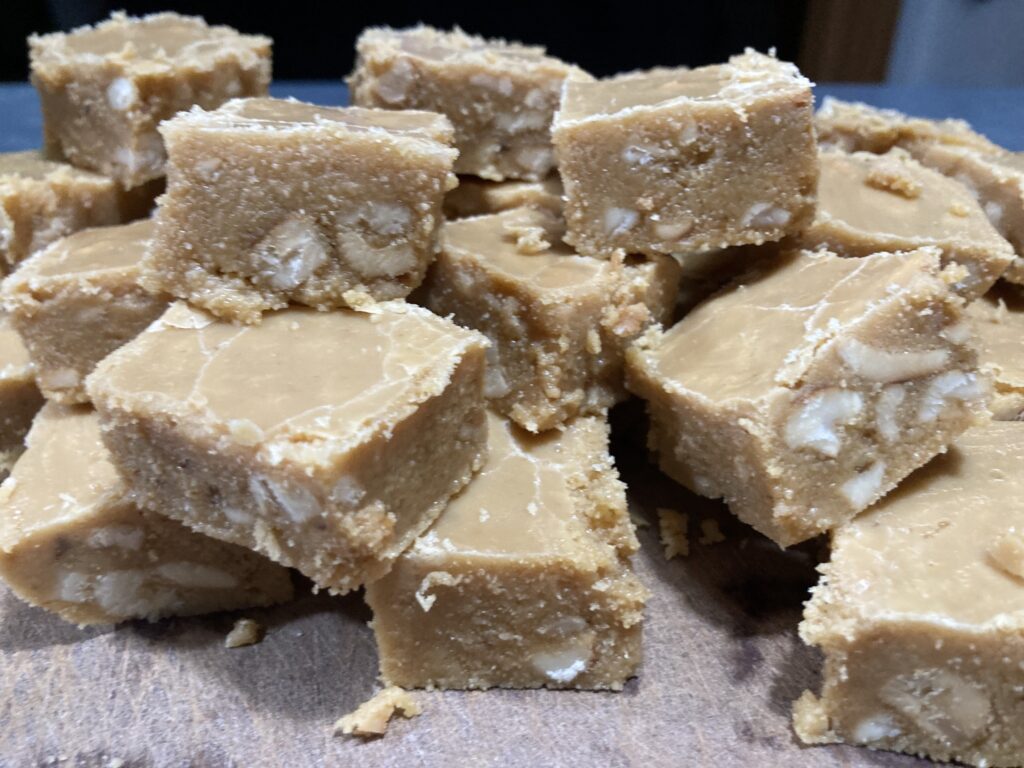Tempered Potatoes
TEMPERED (cooked, mixed with seasoned onions): I used to be really confused when my mom referred to ‘tempered potatoes’ or other tempered dishes. In Western cooking, ‘tempering’ means to slowly bring up the temperature of a cold or room temperature ingredient, by adding small amounts of a hot or boiling liquid. Adding the hot liquid gradually prevents the cool ingredient from cooking or setting. In Western cooking, tempering typically refers to either chocolate or eggs.
In South Asian cuisine, tempering is a widely used cooking method; you heat spices in hot oil, and then add them to your dish at the end of cooking. The hot oil extracts the flavors of the spices and intensifies their effect. South Asian tempering is done either at the beginning of the cooking process or as a final flavoring at the end—or sometimes both! The ingredients are usually added in rapid succession, rarely together, with those requiring longer cooking added earlier and those requiring less cooking added later. For instance, you’d add black mustard seeds to the hot oil first and then later add chopped garlic, which could burn if added earlier.
You can use this method with a wide variety of spices, for a wide variety of vegetables; you can simply mix tempered onions with boiled potatoes, or add them to a simmered lentil curry. Tempering highlights flavors that have already cooked into the dish, adding a bright, fresh seasoning note.
*****
Tempered Potatoes
(20 minutes, serves 4)
Simple, classic – my kids like this preparation.
3 russet potatoes, peeled
1 onion, sliced
3-4 cloves garlic , sliced
3 Tbsp. lime juice
1-2 tsp. dried red chili pieces
½ tsp. cayenne
¼ tsp. ground turmeric
¼ cup vegetable oil
1 ½ tsp. black mustard seed
1 2-inch cinnamon stick
1 dozen curry leaves
1 – 1 1/2 tsp. salt
1. Boil potatoes, drain, and cut into large chunks or small dice, as you prefer.
2. In a medium bowl, mix these ingredients: onion, garlic, lime juice, chili pieces, cayenne, turmeric, and salt.
3. Heat oil in a saucepan on medium-high heat; when oil is ready add mustard seeds and let it pop up (nearly 2-4 seconds). Then add cinnamon and curry leaves and let it fry for 1-2 minutes. Then add the onion mixture and stir to mix.
4. Turn heat to medium, and fry, stirring occasionally, until onions are translucent-golden, about 10 minutes; be careful not to burn them. The mixture should be very aromatic by this stage.
5. Add potatoes into the onion mixture, mixing well, but don’t break the potatoes into small pieces. Stir for a minute or two until well blended; taste and add salt and/or lime juice as desired. Serve with rice or bread.
Perfect Winter Food
Jed’s favorite curry of mine is the beet curry — it’s funny, I don’t normally crave beets, but in this preparation, I do. Sweet, tangy, a hint of spice. Perfect winter food.
Sri Lankan Beet Curry
(30 minutes, serves 4)
This dish has a lovely sweet flavor with just a hint of spice—beets have a higher sugar content than any other vegetable, and sugar is sometimes made from beets.
3 medium onions, chopped fine
3 TBL vegetable oil
1/4 tsp black mustard seed
1/4 tsp cumin seed
4 large beets (about one lb), peeled, cut in thick matchsticks
1-2 rounded tsp salt
1 rounded tsp turmeric
2-3 tsp lime juice
1-3 chopped green chilies
two dozen curry leaves (optional)
2 cups coconut milk
1. Sauté onions in oil on high with mustard seed and cumin seeds until onions are golden/translucent (not brown). Add beets, salt, turmeric, lime juice, chilies, and curry leaves.
2. Lower heat to medium and add coconut milk. Cover and cook, stirring frequently, until beets are cooked through, about 20 minutes.
3. Remove cover and simmer, stirring, until well blended. Serve hot.
Simmering beet curry — almost done.
Leeks Fried with Chili
So, I feel I should note that the timing for these chili leeks is misleading — it says 50 minutes, which is true for total cooking time, but for 30 minutes of that, it’s just simmering away on low, so there’s very little active cooking. I love this dish for a few reasons:
a) it’s super easy to include in dinner party cooking, since it mostly is going on its own (just remember to set a timer so you don’t forget to turn off the heat!)
b) it’s a very spicy accompaniment, which is great to have around to serve with mild curries, so that those who want spicy can make it spicy, and those who don’t can skip it
c) it’s a vegetable dish I don’t have to chop onions for, because it’s basically onions already on its own. ![]()
Also, it’s delicious and very easy, one of the first dishes I learned to cook. If you have someone like Kevin around willing to slice the leeks and wash them for you, even better — then it’s almost no effort at all!
*****
Leeks Fried with Chili
(50 minutes, serves 8.)
This accompaniment offers a little extra heat and onion-y zing to a plate of rice and curry.
4 medium leeks
1/4 cup oil
1/2 rounded tsp turmeric
1 1/2 rounded tsp chili powder
1 rounded tsp salt
1. Rinse dirt off outside of leeks. Discard any tough or withered leaves, but do use the green portions as well as the white.
2. With a sharp knife, slice the leeks thinly across the stalk, making thin rings / chiffonade; when you’re slicing the green leaves, make a tight bundle in your hands for easier slicing.
3. Wash the sliced leeks very thoroughly. The soil trapped between the leaves won’t actually taste particularly bad, but the grittiness is unpleasant. I recommend not simply running the sliced leeks under a colander—rather, put them in a large bowl of water and wash them vigorously, changing the water at least three times. This is labor-intensive, but well worth it.
4/ Heat oil in a large saucepan and add the leeks. Sauté, stirring for 5 minutes, then add the remaining ingredients and stir until well blended.
5. Cover and cook over low heat for 30 minutes, stirring occasionally. The leeks will reduce in volume. Uncover and cook, stirring, until liquid evaporates and leeks appear slightly oily. Serve hot.
***
18 seconds of slicing leeks; I took over from Kev briefly so he could take a little video.
It turns out that Kevin cuts them totally differently than I do — he just does one firm slice, and I have a sawing motion habit with leeks. He also started at the white end, and I typically start at the green end. However you slice, definitely hold the leek together firmly when you’re at the looser green end, and watch your fingers!
***
Leeks reduce quickly in volume — this is just a few minutes into stirring, and they’re half the size they were when they went in.
***
After stirring in the cayenne, salt, and turmeric.
Sri Lankan Carrot Curry
I had to take a little break from the 30 days of Sri Lankan vegan posting because we had too much food and had to eat some before I could cook more. ![]() But we’ve eaten it all now, so I’m back, and Jed’s coming to visit tomorrow, and he’s mostly vegetarian, so we should be able to eat through it faster for a bit…
But we’ve eaten it all now, so I’m back, and Jed’s coming to visit tomorrow, and he’s mostly vegetarian, so we should be able to eat through it faster for a bit…
Carrot curry is one of the first things I learned to cook — very simple, very tasty. If you’re not vegan, we typically eat this with beef curry; they pair very well together. For a vegan meal, you might try this with a spicy chickpea or jackfruit dish.
*****
Sri Lankan Carrot Curry
(20 minutes, serves 4)
3 medium onions, chopped
3 TBL vegetable oil
1 T ginger, minced
3 cloves garlic, chopped
3 Thai green chilies, chopped fine
1/2 tsp black mustard seed
1/2 tsp cumin seed
six large carrots, sliced into thin coins
1 rounded tsp salt
1/2 t. turmeric
1 cup coconut milk (can use milk instead, but be extra careful not to curdle)
1. Sauté onions in oil on high with mustard seed, cumin seed, and ginger until onions are golden. Add garlic, carrots and salt. Cook on medium-high, stirring frequently, until carrots are cooked through.
2. Stir in coconut milk and turn heat down to low; simmer until well-blended, stirring constantly. Serve hot.
Cubes of Ginger-Garlic
Sunday Night Crepe Bar Dinner
Sunday night dinner — Kavi had a friend joining us this time, which was new and fun. Tonight was crepe bar; her friend was a little bewildered by savory and sweet being on the table at the same time, but once we explained the protocol (do what you want, but most people do savory first, then sweet), they were fine with it. ![]()
Perfect Size Packaging
The new packaging I found is also the perfect size for dipped marshmallows. ![]() Yay! These are passionfruit dipped in milk chocolate with tiny gold hearts…
Yay! These are passionfruit dipped in milk chocolate with tiny gold hearts…
Pretty Enough for Gifting
Found new packaging that I like for the cashew milk toffee. ![]() It’s the little things. I wanted something pretty enough for gifting — I think this qualifies!
It’s the little things. I wanted something pretty enough for gifting — I think this qualifies!
Another Degree or Two to Go
Milk toffee when it’s almost ready to be poured — we’re looking for ‘soft ball’ stage. Just another degree or two to go…
